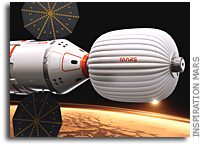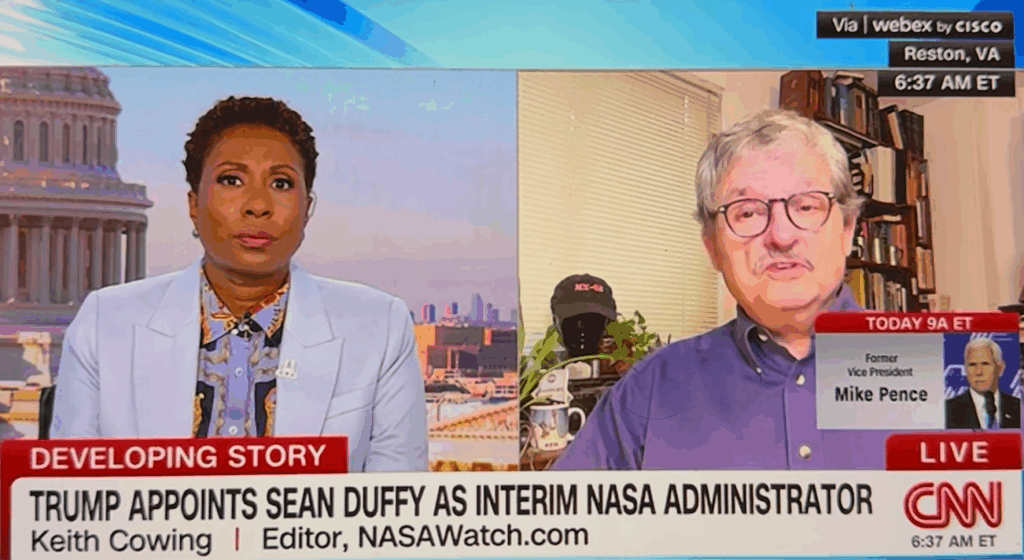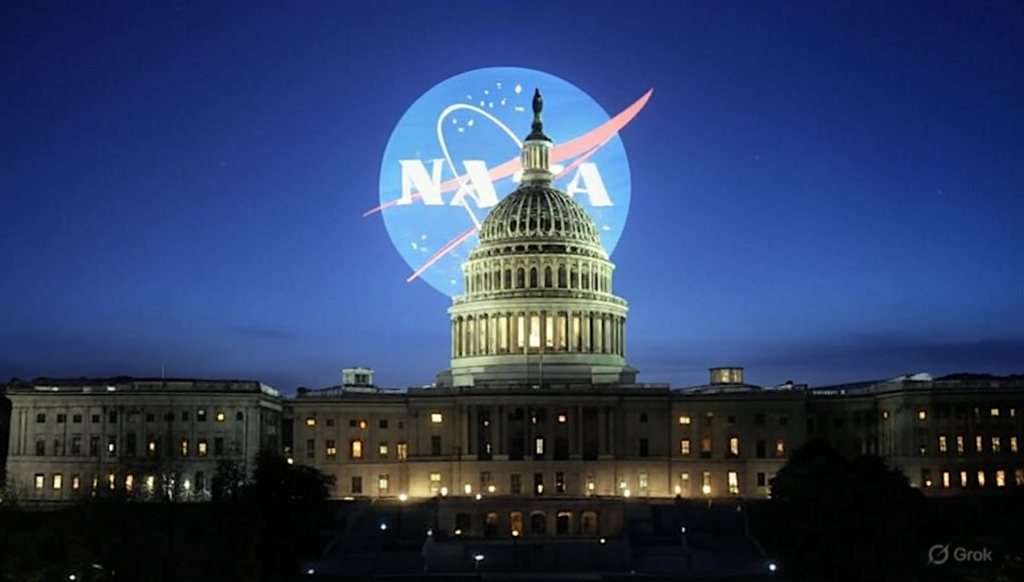Inspiration Mars at Commercial Space Hearing Today
 Subcommittee on Space Hearing – Commercial Space
Subcommittee on Space Hearing – Commercial Space
Nov 20, 2013 10:00am
Panel I
Rep Kevin McCarthy, House Majority Whip
Panel II
Patricia Cooper – President, Satellite Industry Association
Stu Witt – CEO and General Manager, Mojave Air and Space Port
Dennis Tito – Chairman, Inspiration Mars Foundation Prepared statement
– Hearing Charter
– Watch live
– Inspiration Mars: Some Thoughts About Their Plan, earlier post
– Inspiration Mars: Some Thoughts About Our Plan, earlier post









The 501 day free trajectory mission to Mars (Inspiration Mars) is a great mission concept but Dennis Tito is promoting the completion of SLS. The launch window for the 501 day trip is too tight. With present funding SLS cannot be ready by December 2017. SLS would require a funding increase and there is no guarantee that throwing more money at it would assure completion and readiness on time.
To promote SLS for this single shot manned flyby of Mars is promotion of a design that is obsolete and yet only in the PDR phase of development. The time and money spent on Constellation Ares and now SLS provided a window of opportunity for a commercial venture to develop a heavy lifter that will satisfy HEOMD’s initial missions beyond LEO (NEA in Earth orbit, a Lagrangian Point or circumlunar mission). Additionally, the cost of maintaining SLS by NASA (1 flight every other year) is too high and simply robs funds that otherwise would create the payload hardware needed for human travel beyond LEO.
I believe that Tito’s Inspiration Mars effort needs to take the “made in America” label off the design. This should not be a effort to give America a “first to Mars” banner. Dennis Tito flew in a Soyuz capsule to the International Space Station. Make this a International – Humankind not American effort and find the funding here and overseas. Dennis, promote and inspire international cooperation not an American triumph and let’s go to Mars!
This has been well publicized all over the world. How many foreign governments do you think have contacted Denis Tito. I would bet 0. And even if they did, what do they have to contribute? We can get the Russians to provide a laboratory. Oh, wait, they are 6 years behind in launching one to the ISS. And then it’s a crap shoot if the Proton it launches on blows up or not.
A little research shows the Proton to be one of the most reliable rockets ever built.
Putting SLS/Orion in the critical path means this will never happen. A Dragon is supossedly design for return velocities that high already, seems like a Falcon heavy based architecture would be the avenue for IM to have a chance to meet their launch window.
Does anyone seriously think a once every two year launch rate for SLS is sustainable?
Where is SpaceX in relation to the Inspiration Mars mission? They have fallen off the radar. One person from SpaceX is on the list of 252 contributors to the I.M.’s Architecture Study Report released today. Elon Musk and SpaceX do have much more ambitious Mars plans but they will take longer to achieve. Do they consider the 501 day mission as folly and not an essential stepping stone to landing humans on Mars? Are there personality conflicts (Tito/Musk)? Have they stated that Falcon Heavy will not be ready by December 2017? If SpaceX’s heavy lifter is not an option, this makes Tito’s presentation to legislature’s today pretty much an act of desperation. Getting this congress to increase SLS funding while cutting the whole NASA budget ain’t going to happen.
I wondered the same thing when I read this post. Surely Elon is an easier critter to deal with than the critters at NASA- and Congress. And this kind of project sounds like something that would appeal to Mr. Musk.
Lunar, Mars, and Asteroid missions only require LVs about 20mT if you build a LEO Gas Station. IOW: *any* heavy lift variant need not apply. Depots allow launch costs to be born in one FY and hardware development in another providing an extremely flexible means of addressing flat budget profiles.
The relative payload mass fractions of methane vs LH2 are at best 75% down to 40% depending on the dV and other factors. This means that if the LH2 mission is 100mT, then the methane powered mission is 125mT at 75% *relative* pmf. At the low $3K/kg, that’s a 75M increase in launch costs alone for methane. The 75% pmf (vs LH2) is for a LEO to lunar orbit TLI (3 km/s) while the 40% (vs LH2) is for Mars. These are not absolute pmfs and are only ballpark, but is starts to show trends on why using methane in a transfer stage BEO may not make sense and why EP cycler is considered from L2 to Mars with much higher dV–higher ISP with reuseablity saves more IMLEO!. Why throw away a EP power system that could last decades in a Mars cycler? IOW: perhaps SpaceX really is concerned with economics of pmf and would be well suited to deliver propellant to LEO depot?
If you think about it, that is why you never see the words “depot” and rarely EP in any technology roadmap. In the case of the Aldrin cycler, China provides the depot in 2028.
Why is it so difficult to see that one could fill up the exact same HLV transfer stage launched separately and achieve more injected mass than the HLV architecture? http://nextbigfuture.com/20…
Why 20 mT? The math for LV sizing is quite simple: 2X 120,000 kg (for two lunar sorties/yr) divided by 10 is 24 mT (10 flights being a reasonable number for any LV/year). This however is for a single LV–the US and the IPs have multiple LVs.
Since at least 70% of the mass of these missions is propellant, more risk can be taken to launch LH2/LOX, leaving a flight or two for the hardware and crew per mission. Even at a terrible 30%, a lunar landing only needs 36 mT of hardware easily launched on two 20mT LVs.
Many confuse a tanker (a transfer stage filled on orbit) with a depot. It makes no sense to add substantial weight to the tanker to reduce its boiloff killing payload mass fraction. HLV or heavy lift variants that refill the transfer stage with tankers are rarely considered in any architecture. Is this by *design*?
A depot is simply an upper stage with no engines and a power bus with active and passive thermal control and the long life equipment is not expended each mission. The depot development cost and risk is minimal and spares are cheap compared to expendable stages with engines–engines drive costs.
Why an astute business man would baseline a HLV that is being developed versus using the existing fleet is puzzling indeed.
Thanks for the details. We do need fuel depots. When Bolden and others at HQ have recently been questioned about SLS, they respond by countering the argument of commercial LVs and the use of depots.
American tax dollars are being wasted on developing NASA’s private HLV. No commercial efforts will use SLS that costs 4x more than the HLV emerging (and arriving sooner) in the private sector.
Human exploration does not alone justify the use of depots. One has to begin designing interplanetary robotic missions around depot use as well. And Dallas Bienhoff’s presentation on Depots indeed shows practical use to even GSO. If we are to begin exploiting NEA natural resources, robotic missions will need depots for transfer stages and fuel for Solar Electric Propulsion to “tug” NEAs to a Earth-Moon Lagrange point. The first human outpost on the Moon or on Mars or simply first exploration of the red planet, will require substantial hardware be delivered ahead of humans. Exploration of Europa type missions would greatly benefit from a depot. Researchers are planning a lower cost Europa orbital surveyor, for one reason, because the NASA budget cannot afford a surveyor with lander.
The frequency of use is critical as Bienhoff points out. But if we could get NASA out of this present path using SLS and into one using smaller heavy lift with a depot, this could free up funds for more payloads, i.e. more frequent missions.
But a 50 mT HLV such as Falcon Heavy makes sense for cost effectively lifting the dry goods, the hardware for the more ambitious missions. Also the F-H fairing is has ~80% of the volume of the Shuttle payload bay and can carry twice the payload mass. This is the main argument for SLS, i.e. lifting monolithic payloads to reduce construction costs on Earth and in LEO. This argument doesn’t pan out if you are realistic about the near & long-term cost of SLS.